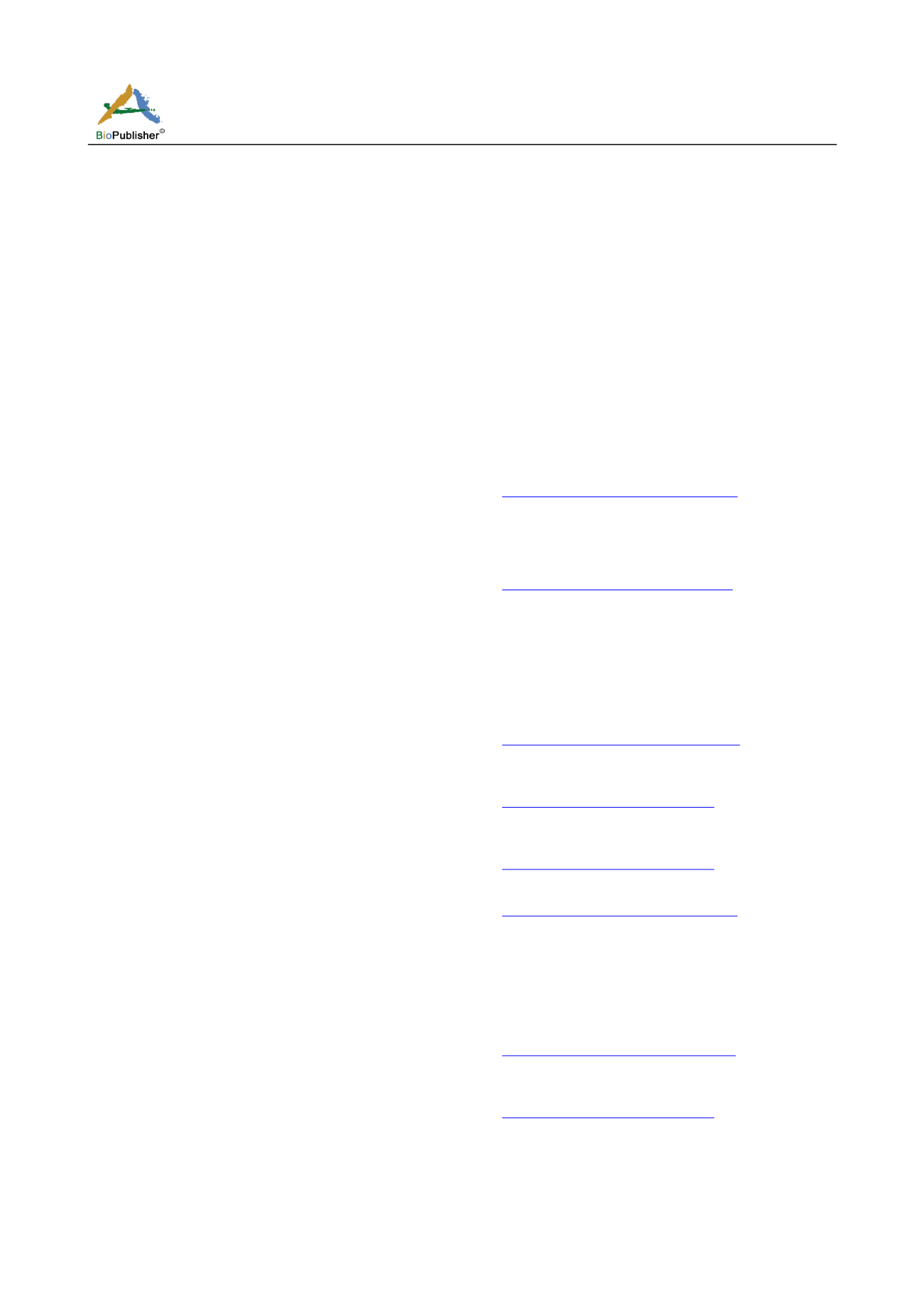
International Journal of Marine Science 2015, Vol.5, No.25, 1-9
8
(2010) have investigated the accumulation of boron in
the fishes and they found below the limits of detection
in all the tissues samples.
This indicated that the distribution of Cd, Ni, Mn, Al,
Pb and Cr in analysed samples were very low rather
than Fe, Co, Cu, Mg, Zn, and B. The relationship
between metals in trash fishes from Cuddalore [Cd
(R
2
= 0.515), Co (R
2
= 0.008), Cu (R
2
= 0.998), Fe
(R
2
= 0.999), Mg (R
2
= 0.990), Mn (R
2
= 0.980), Ni
(R
2
= 0.088), Pb (R
2
= 0.752), Zn (R2 = 0.171), Al (R
2
=
0.634), Cr (R
2
= 0.199) and B (R
2
= 0.588] and
Pazhayar [Cd (R
2
= 0.928), Co (R
2
= 0.372), Cu (R
2
=
0.998), Fe (R
2
= 0.996), Mg (R
2
= 0.993), Mn (R
2
=
0.773), Ni (R
2
= 0.178), Pb (R
2
= 0.821), Zn (R
2
=
0.951), Al (R
2
= 0.996), Cr (R
2
= 0.996) and B (R
2
=
0.915] were evaluated by the regression method.
Results obtained from the present study reveal that the
concentrations of Ni, Co, Cr and Al are below well the
permissible limits and suggesting that these metals are
at safer level. The concentration of Cd and Pb was
above the permissible level in Cuddalore and it might
be due the presence of large scale industries which can
significantly contribute to the heavy metal load in to
the estuarine system.
Conclusion
The present study was carried out in polluted and
unpolluted areas to find out the status of heavy metal
concentrations in different trash fish species, landed in
Cuddalore and Pazhayar landings. As expected,
significant differences were found in different tissues
in the accumulation levels of the selected metals. This
result showed that higher levels of metals were found
in the gill, while lower levels were obtained in the
muscle. The concentration of trace metals in samples
is depended on fish species and habitat.
It may be concluded that consumption of these species
from this region is not a problem for human health,
but Cd and Pb is higher than the maximum
permissible levels in Cuddalore. However, a potential
risk may emerge in the future, depending on the
increasing chemicals, beverage manufacturing,
domestic waste water disposal, oil, soap, paint
production, paper and metal processing plants, ship
and boat transports. It is anticipated that, in future,
Cuddalore may receive a huge amount of heavy
metals due to the increasing industrial activities in this
region than the Pazhayar. Further, the present values
of metals concentrations can be used as a baseline data
for future comparisons with regard to heavy metal
pollution in trash fishes.
Acknowledgements
The authors are grateful to Prof. K. Kathiresan, Dean and
Director, CAS in Marine Biology, Faculty of Marine Sciences,
Annamalai University, Parangipettai for providing facilities to
carry out this research work and the Department of
Biotechnology (DBT/PR-9230/BLE/08/557/2007), Govt. of
India for their financial assistance.
References
Amundsen, P. F. Staldvik J. Lukin A. A. Kashulin N. A. Popova O. A. and
Reshetnikov Y. S. 1997. Heavy metal contamination in freshwater fish
from the border region between Norway and Russia. Scien. Tot.
Environ, 201, 371-378
Anonymous, 2002. Regulation of setting maximum levels for certain
contaminants in foodstuffs. Official Gazette, October 16, Iss: 24908
Ashraf, M. Tariq J. and Jaffar M. 1991. Contents of trace metals in fish,
sediment and water from three freshwater reservoirs on the Indus River,
Pakistan. Fish. Res, 12, 355-364
Biswas, S. Krishna R. Prabhu Jahir Hussain, K.M. Selvanayagam, K.K.
Satpathy. 2011. Heavy metals concentration in edible fishes from
coastal region of Kalpakkam, southeastern part of India. Environ.
Monit. Assess. DOI 10.1007/s10661-011-23-25y (2011)
Blakhima, R. J. 1970. Trace element metabolism in animals. In C. F. Mills
(Ed.). Livingstone: Edinburgh
Canli, M. and Atli G. 2003. The relationships between heavy metal (Cd, Cr,
Cu, Fe, Pb, Zn) levels and the size of six Mediterranean fish species.
Environ. Poll, 121, 129-136
Carvalho, M. L. Santiago S. and Nunes M. L. 2005. Assessment of the
essential element and heavy metal content of edible fish muscle. Anal.
Bioanal. Chem, 382, 426-432
Cogun, H. Y. Yuzereroglu T. Firat O. Gok G. and Kargin F. 2006. Metal
concentrations in fish species from the northeast Mediterranean Sea.
Environ. Monit. Assess, 121, 431-438
Chale, F. M. M. 2002. Trace metal concentrations in water, sediments and
fish tissue from lake Tanganyika. Sci. Total Environ, 299, 115-121
CSHPF, 1995. Conseil Superieur d’Hygiene Publique de France. Plomb,
cadmium et mercure dans l’alimentation:´Evaluation et gestion du
risque. Minist‘ere du Travail et des Affaires Sociales,´editeur. Paris:
Lavoisier Tec. Doc
Dhaneesh, K. V. Gopi M. Ganeshamurthy R. Ajith Kumar T. T. and
Balasubramanian. T. 2012. Bio-accumulation of metals on reef
associated organisms of Lakshadweep Archipelago. Food Chem., 131,
985-991
Ebrahimpour, M. and Mushrifah I. 2009. Variation and correlations of
selected heavy metals in sediment and aquatic plants in Tasik Chini,
Malaysia. Environ. Geol, 57, 823-831
EEC, 2001. Commission Regulation (EC) No 466/2001of 8 March 2001
setting maximum levels for certain contaminants in foodstuffs. Official
J. Europ. Comm, L77
FAO/WHO, 1976. List of maximum levels recommended for contaminants
by the Joint FAO/WHO Codex Alimentarius Commission. Second
Series. CAC/ FAL, Rome, 3, 1-8


